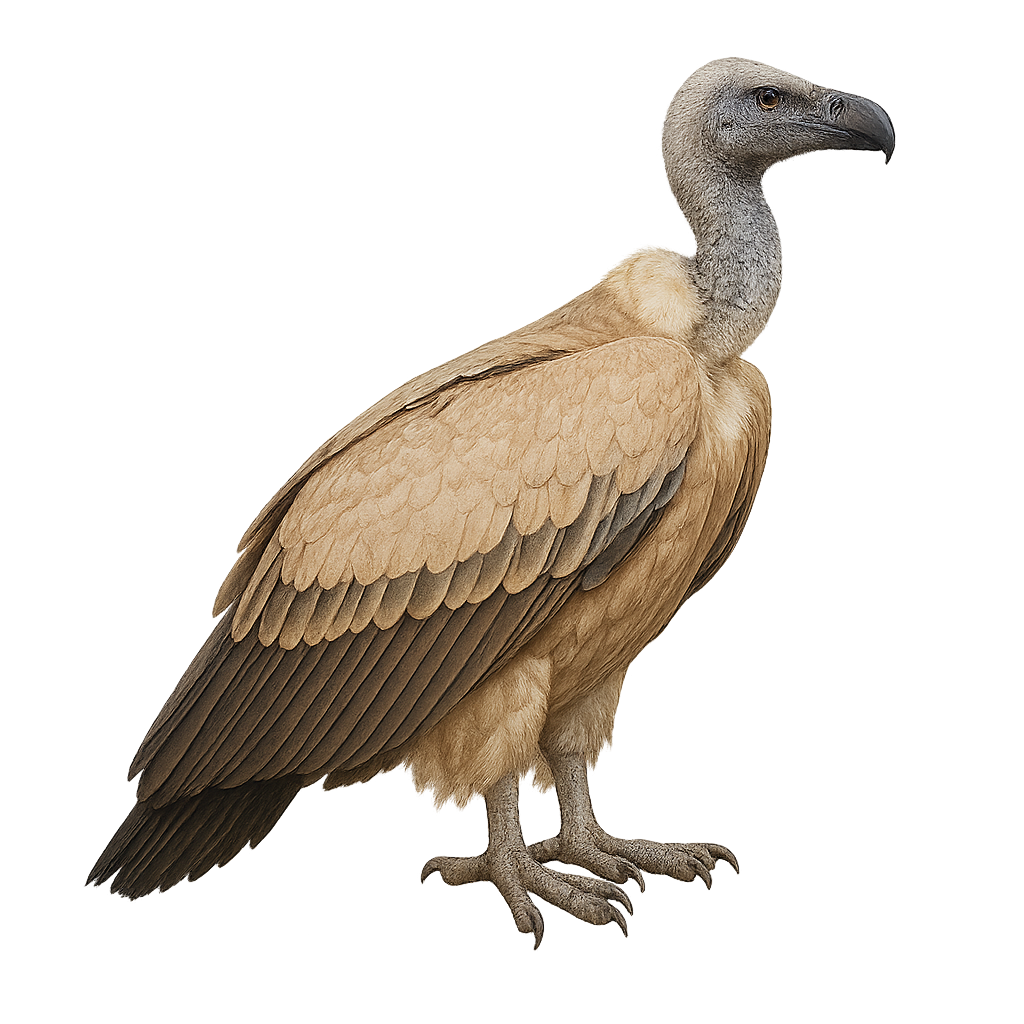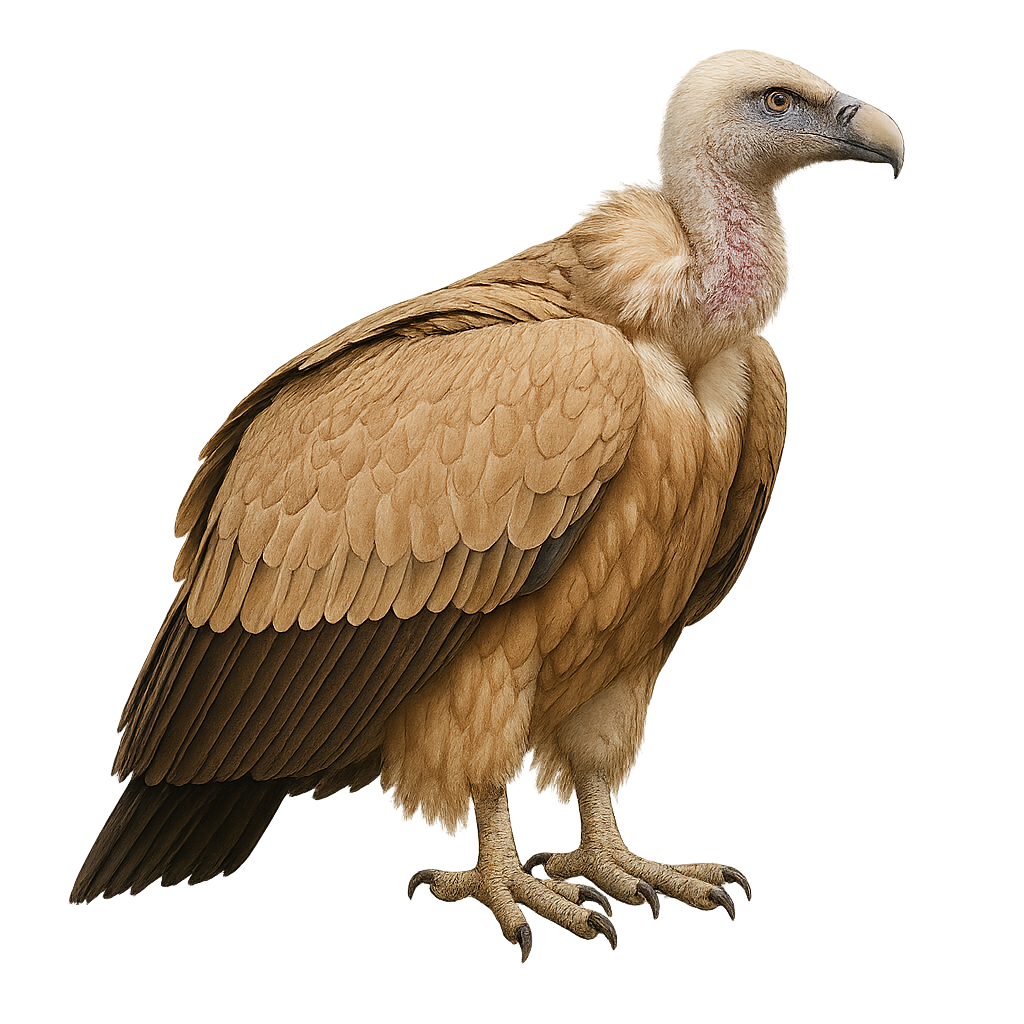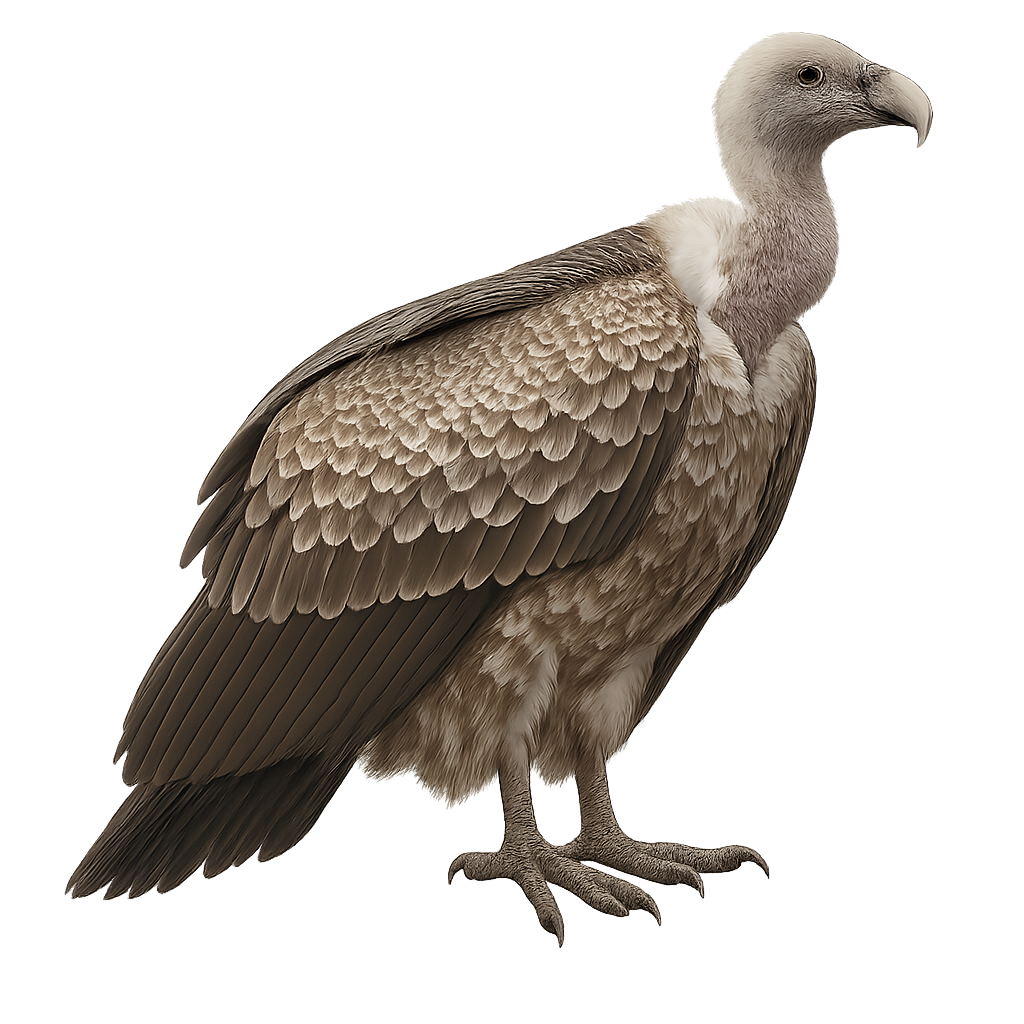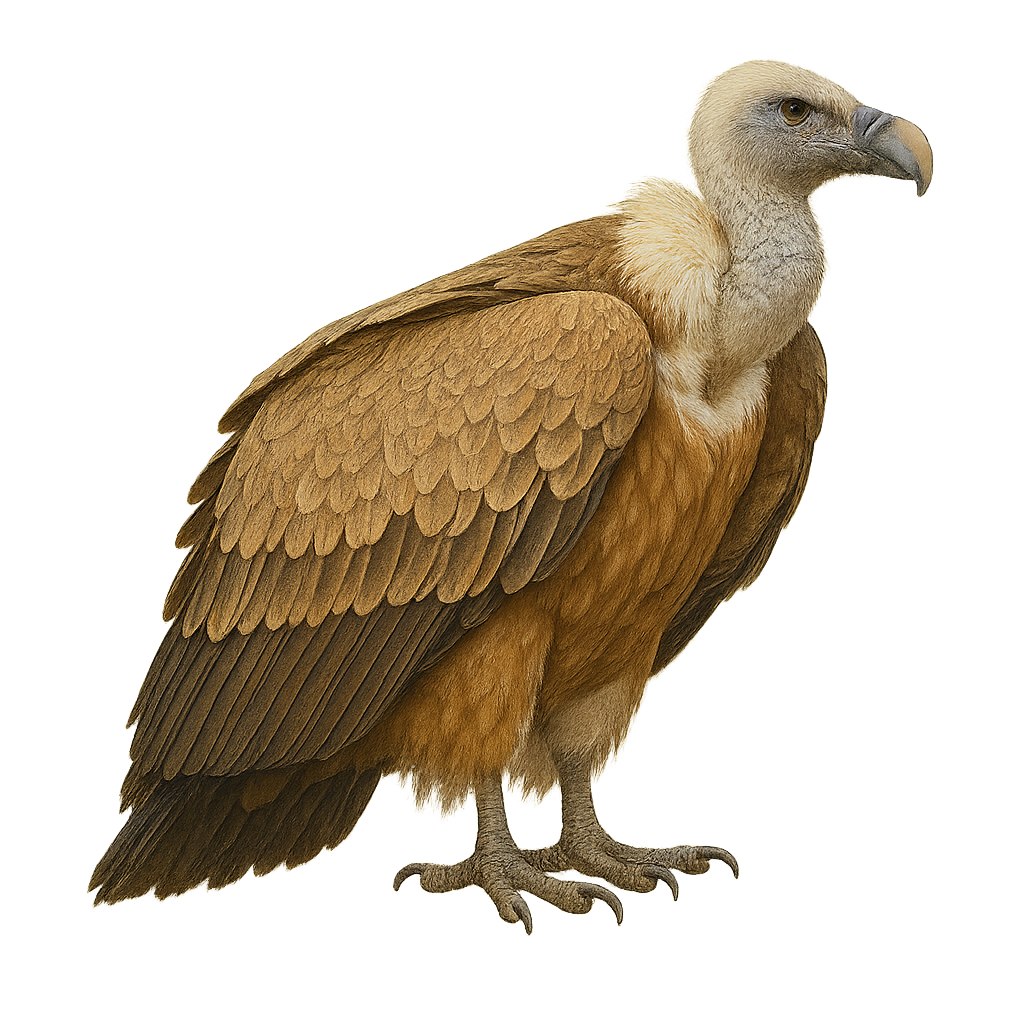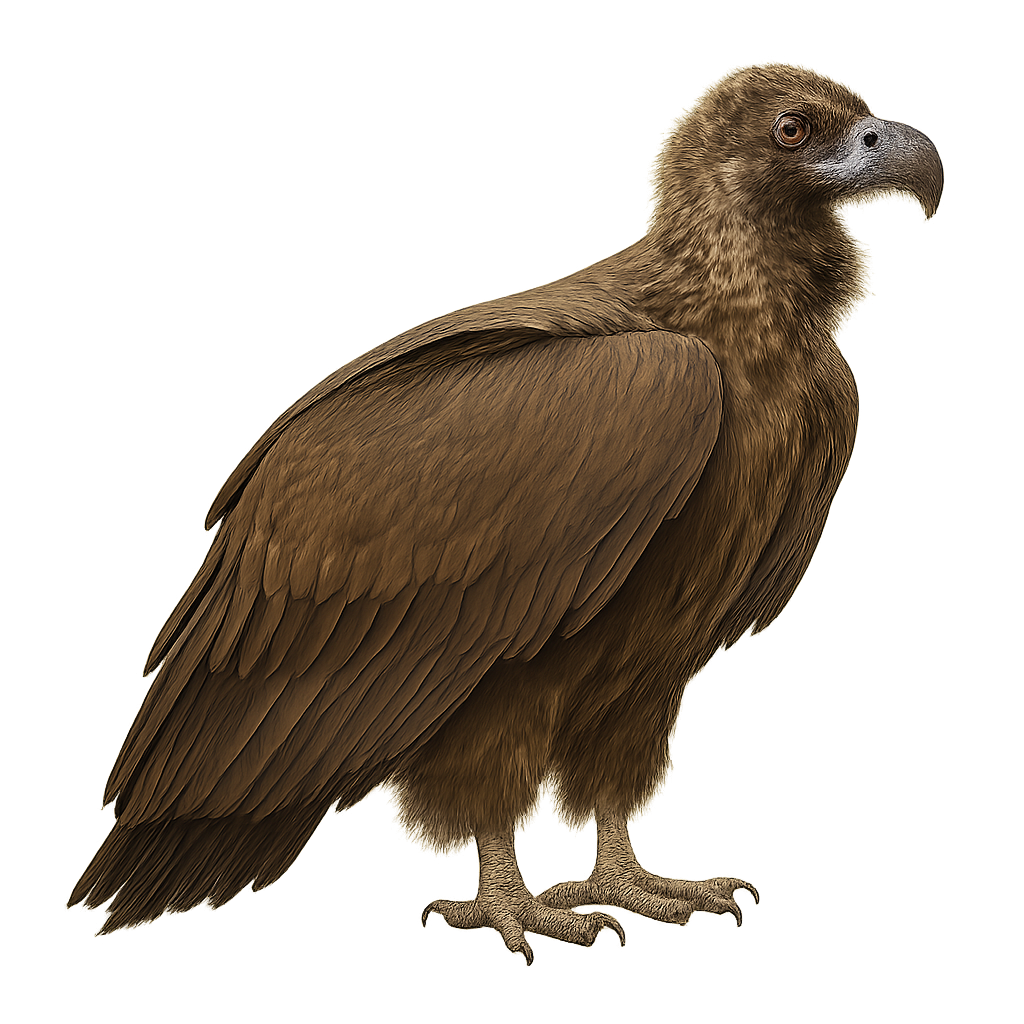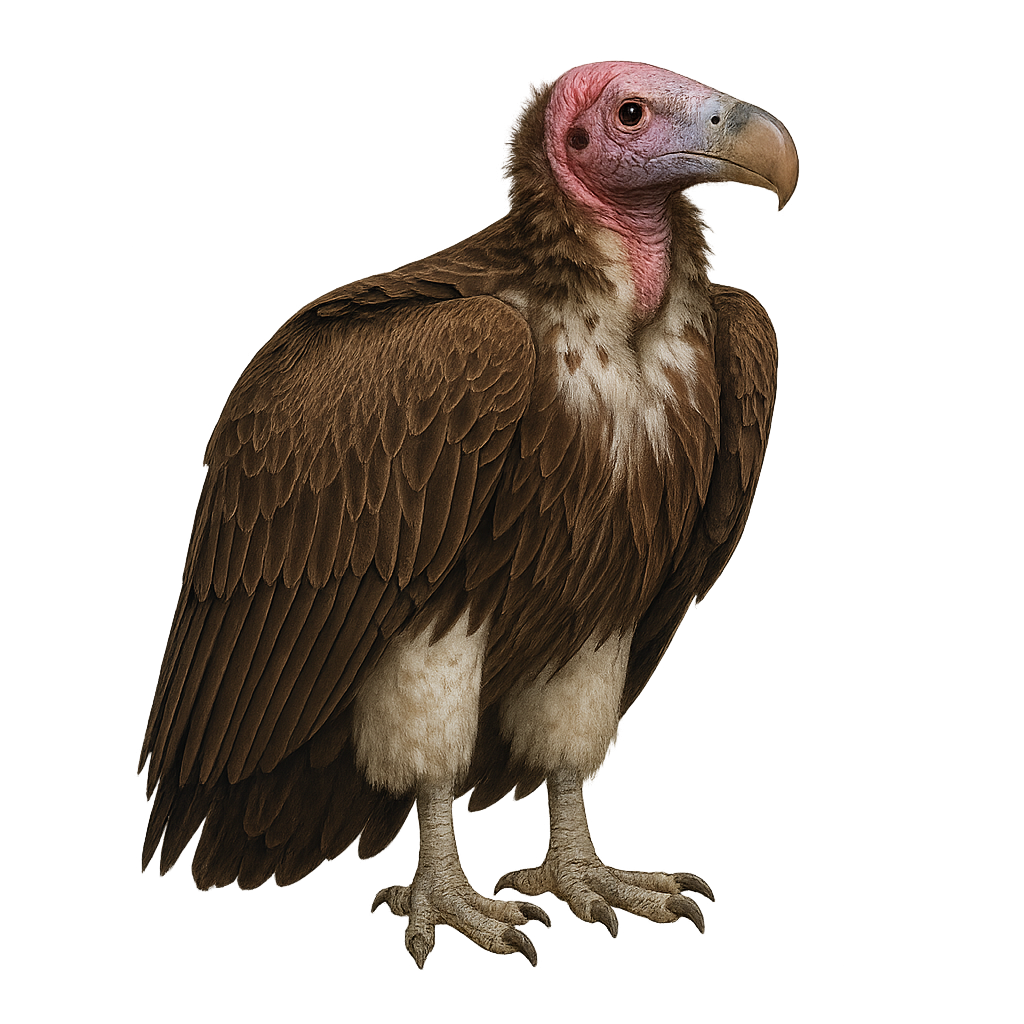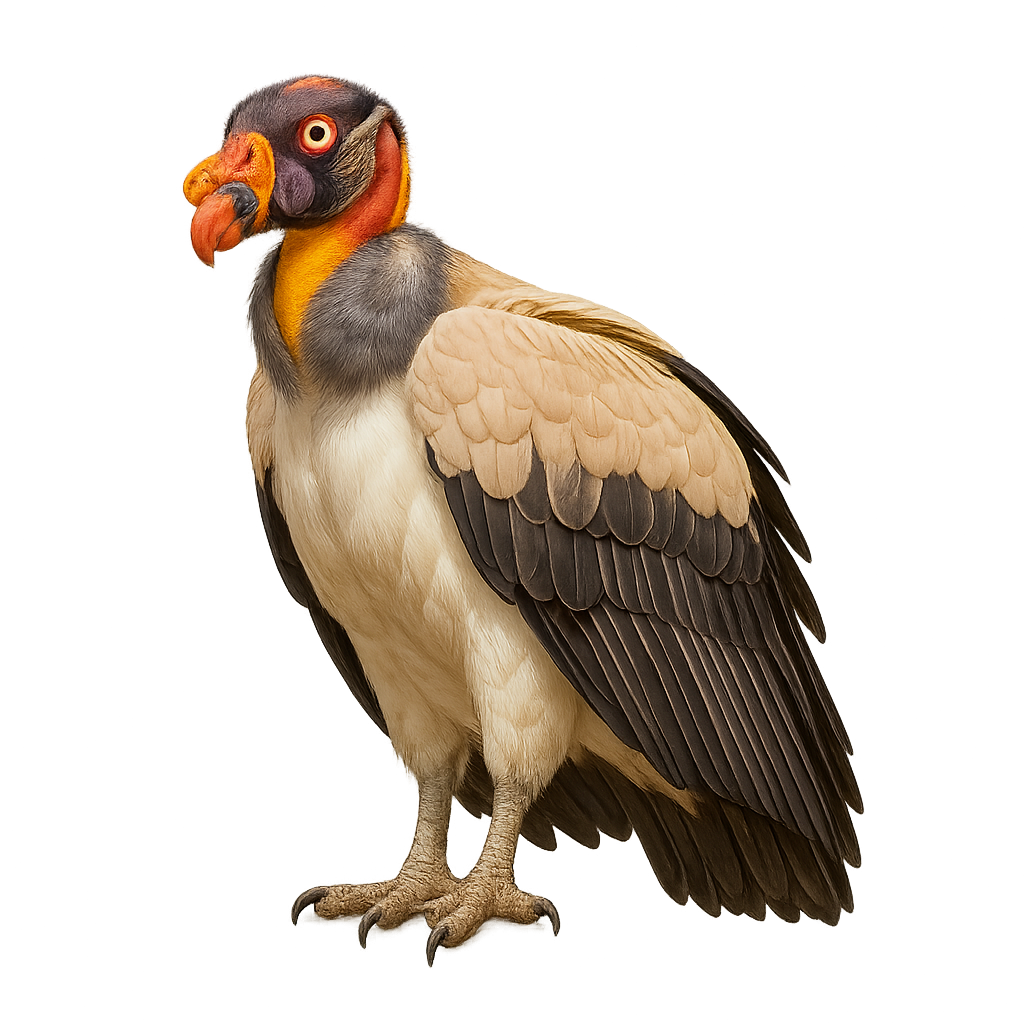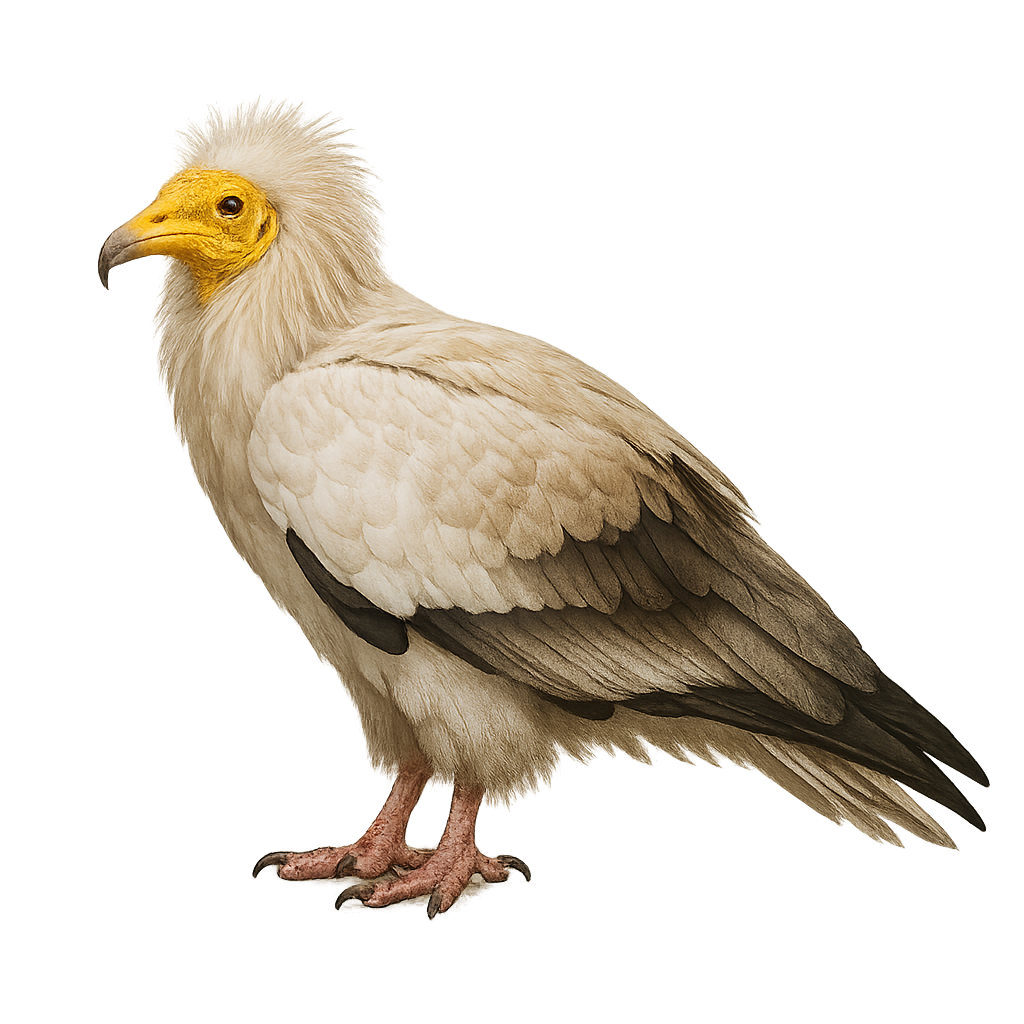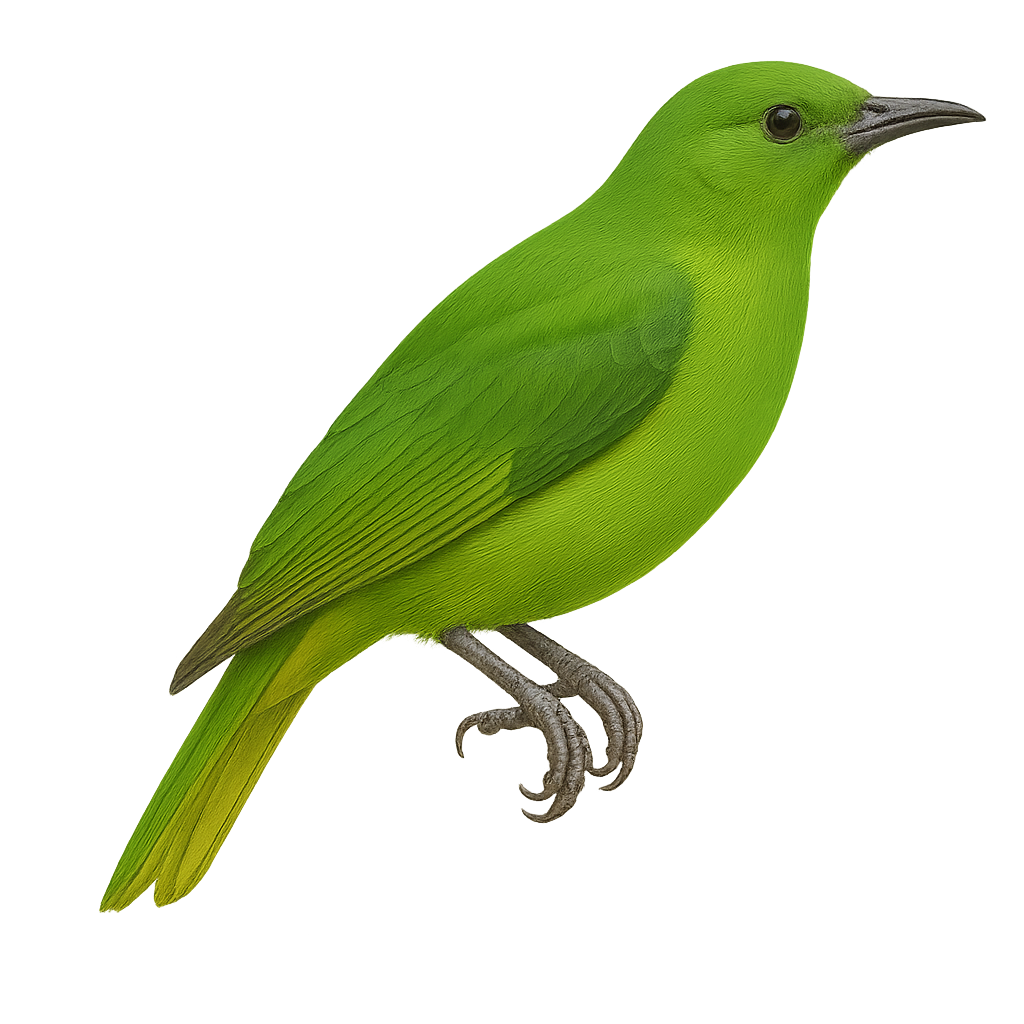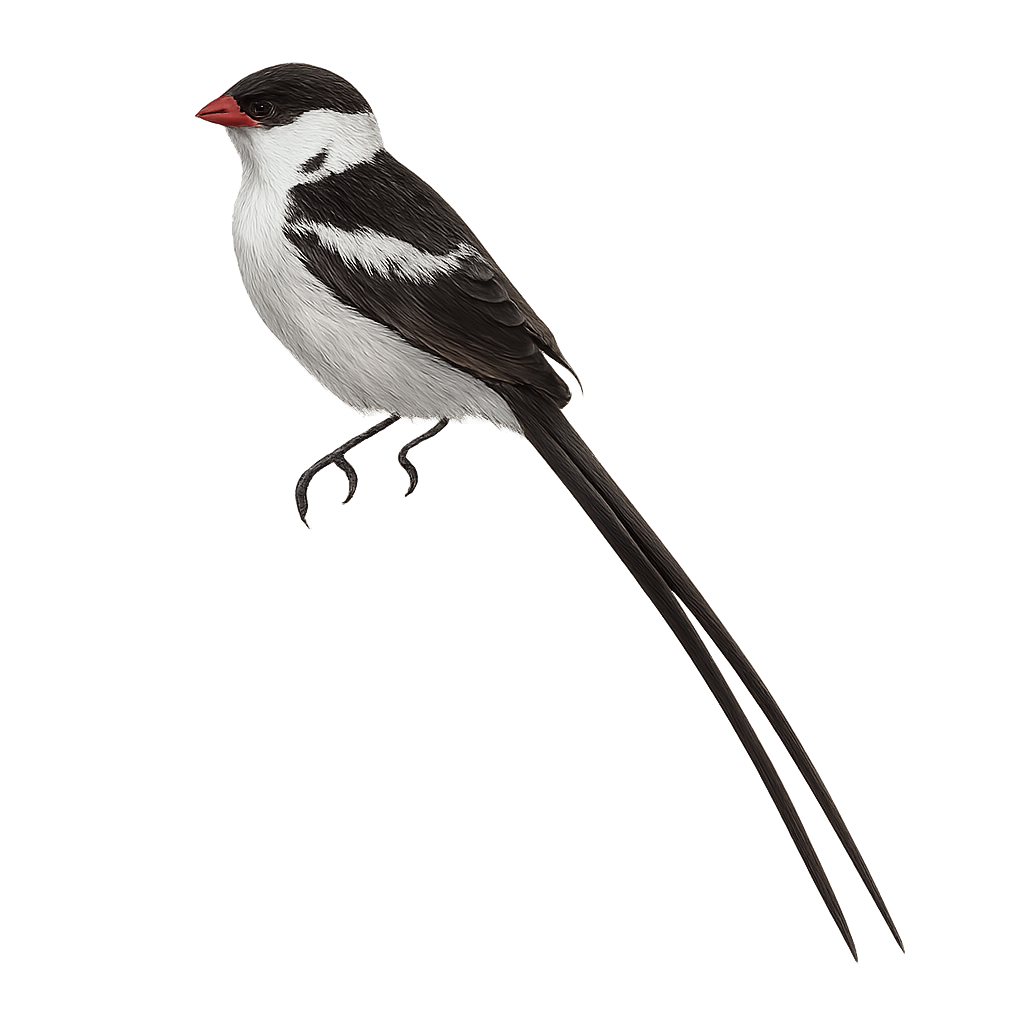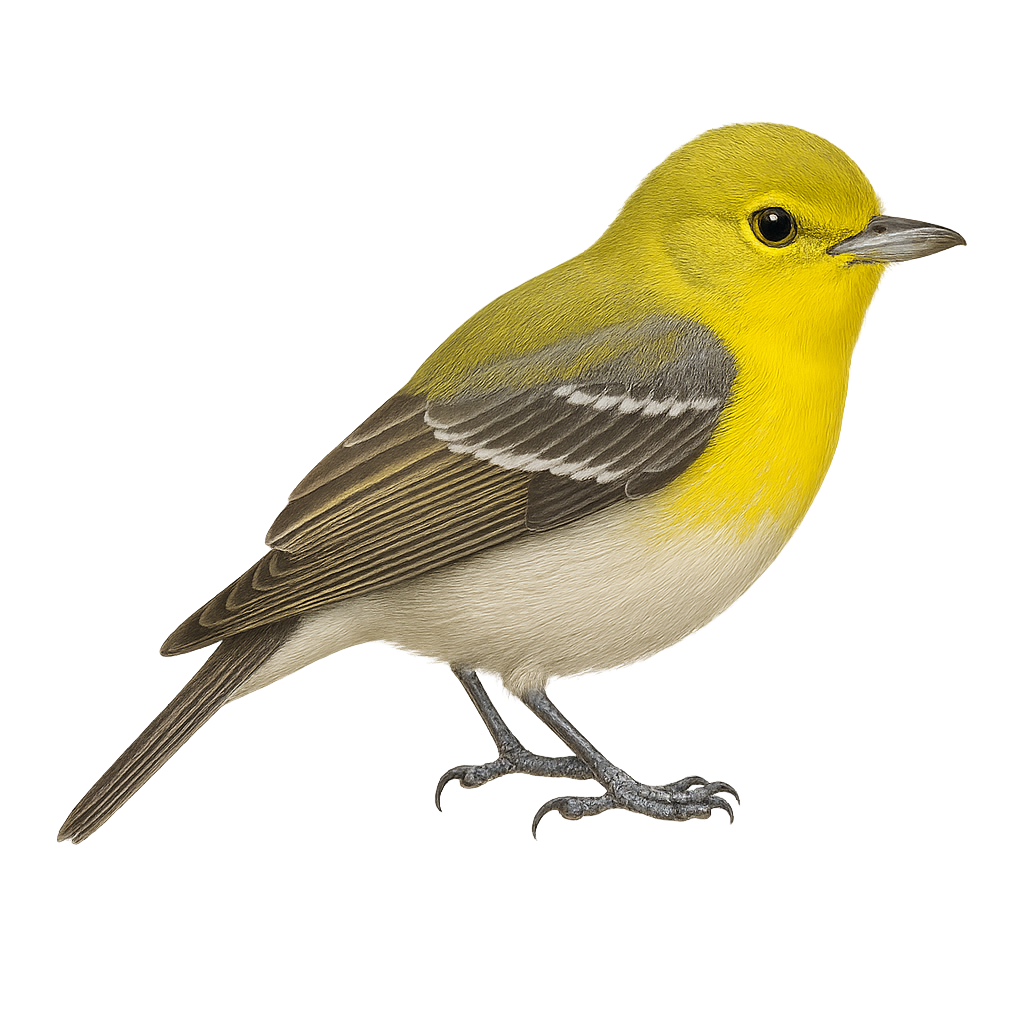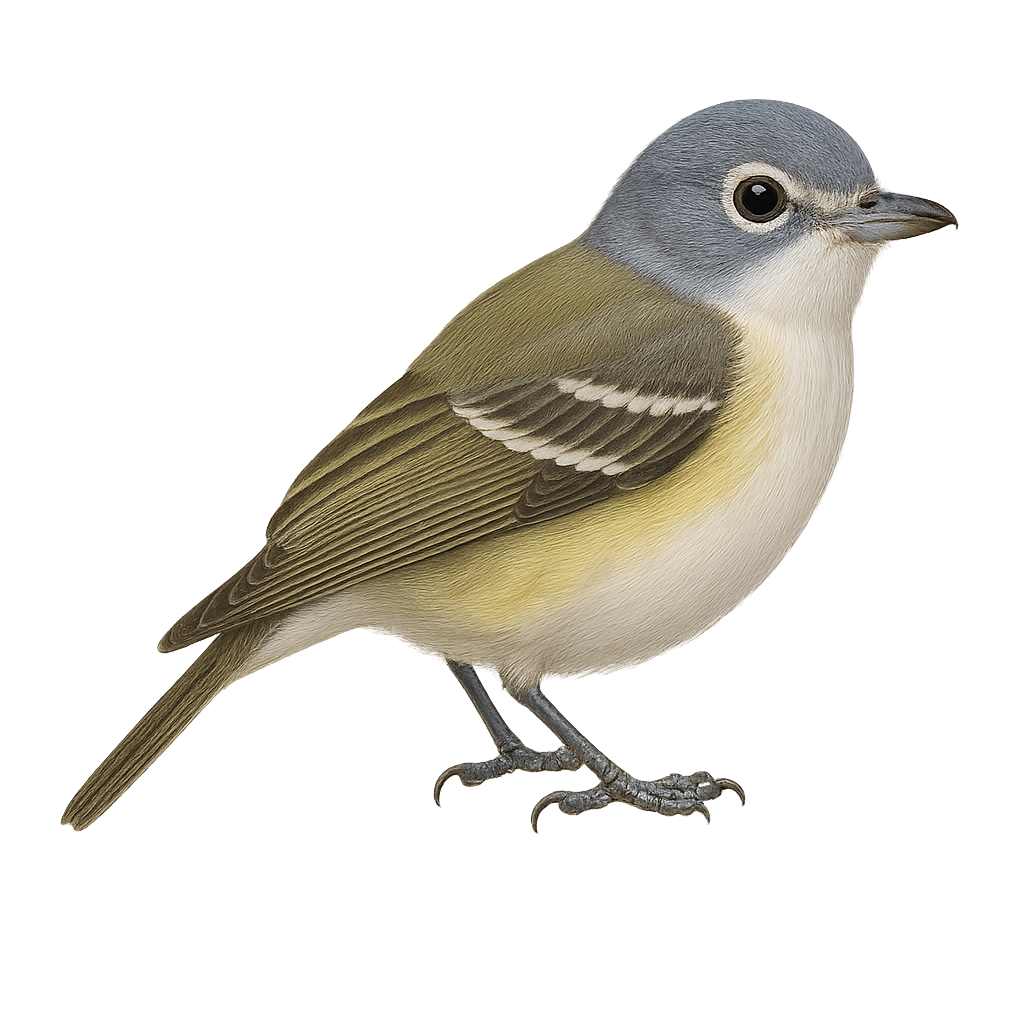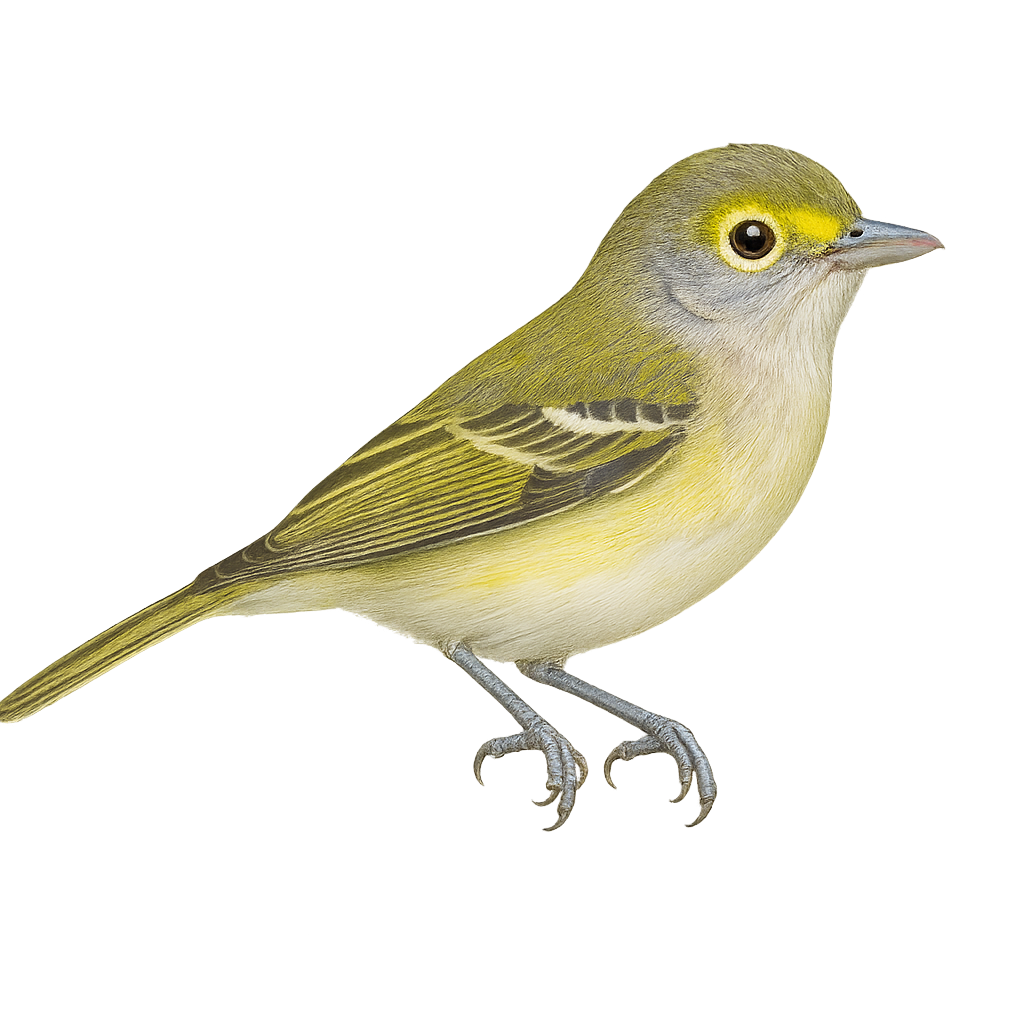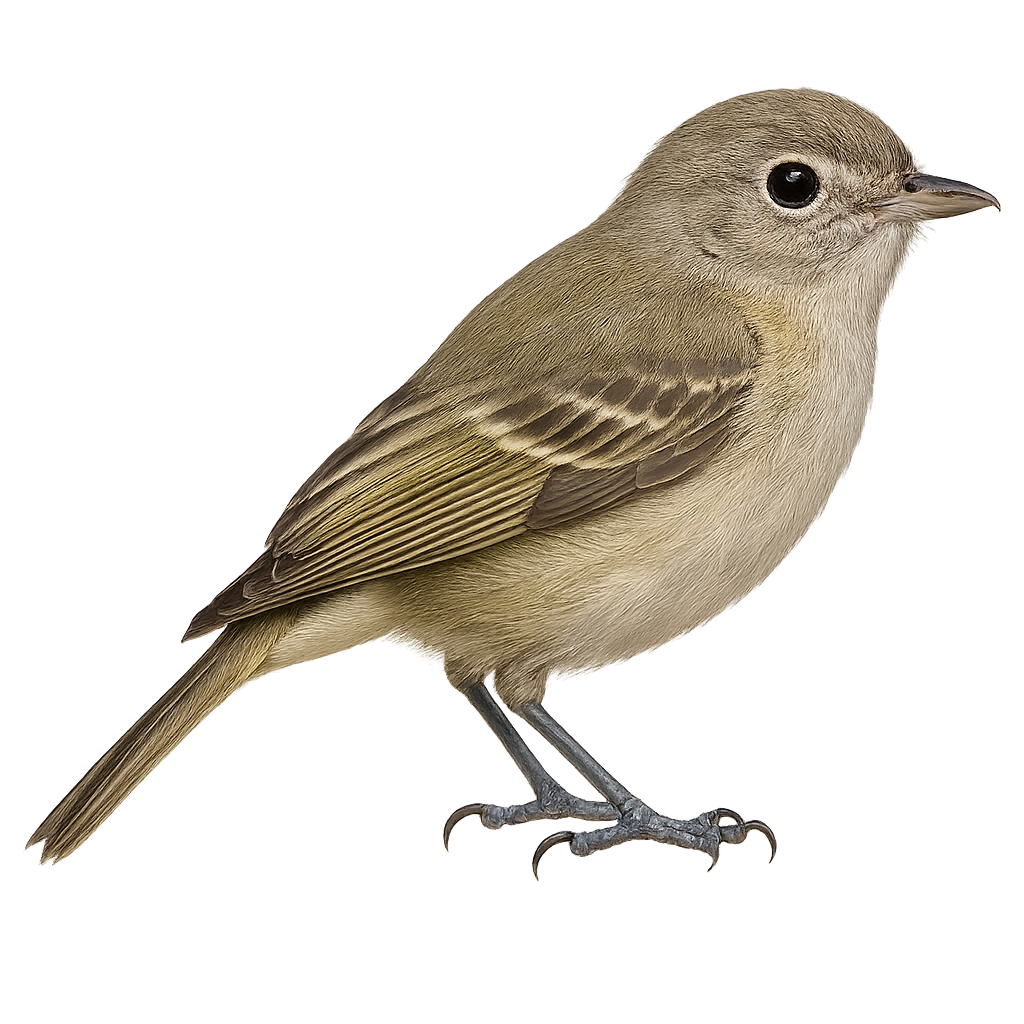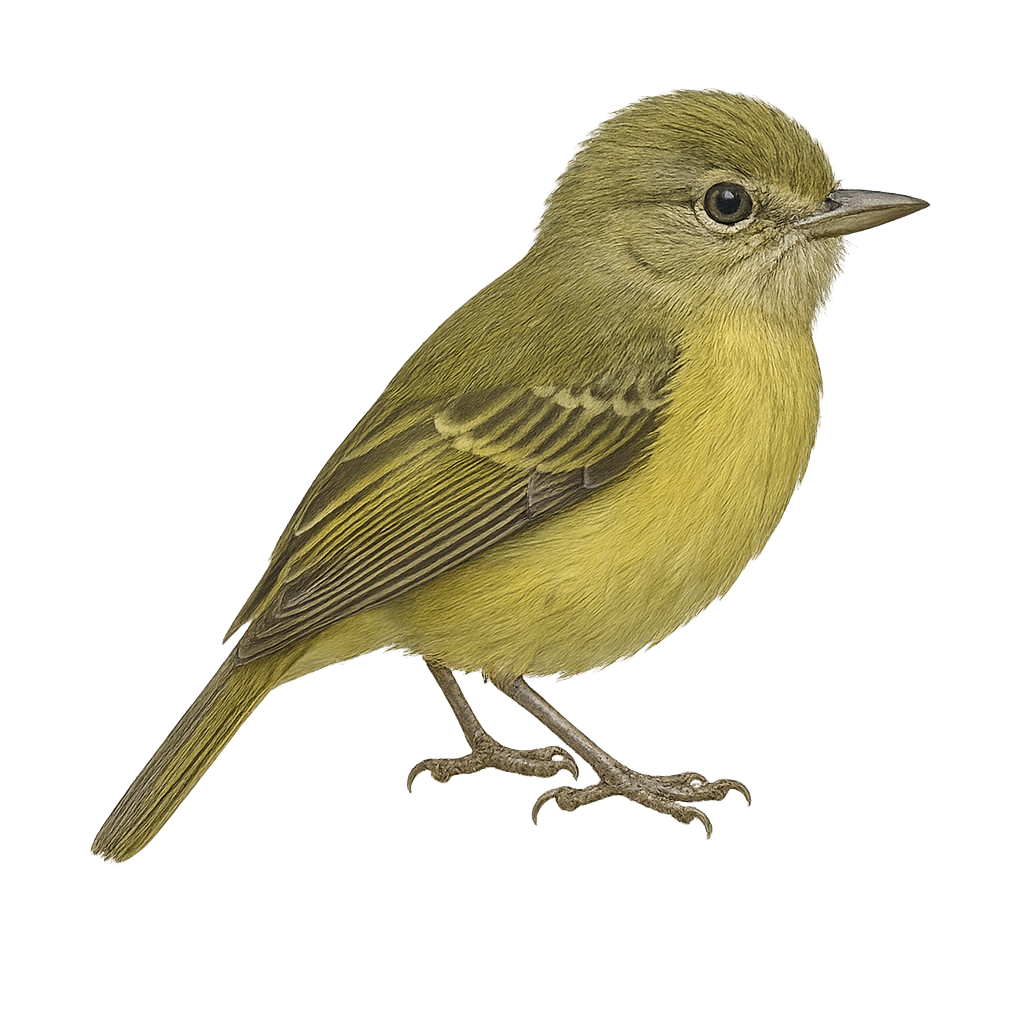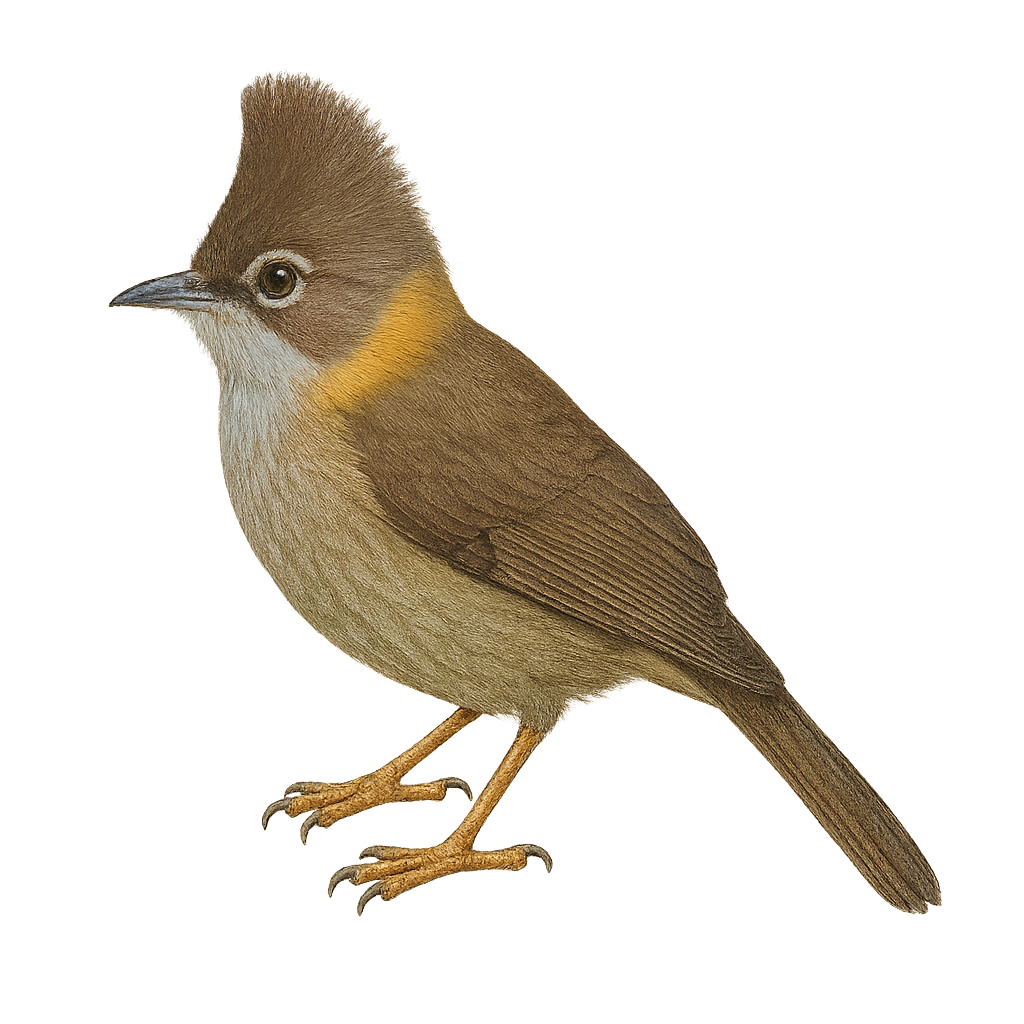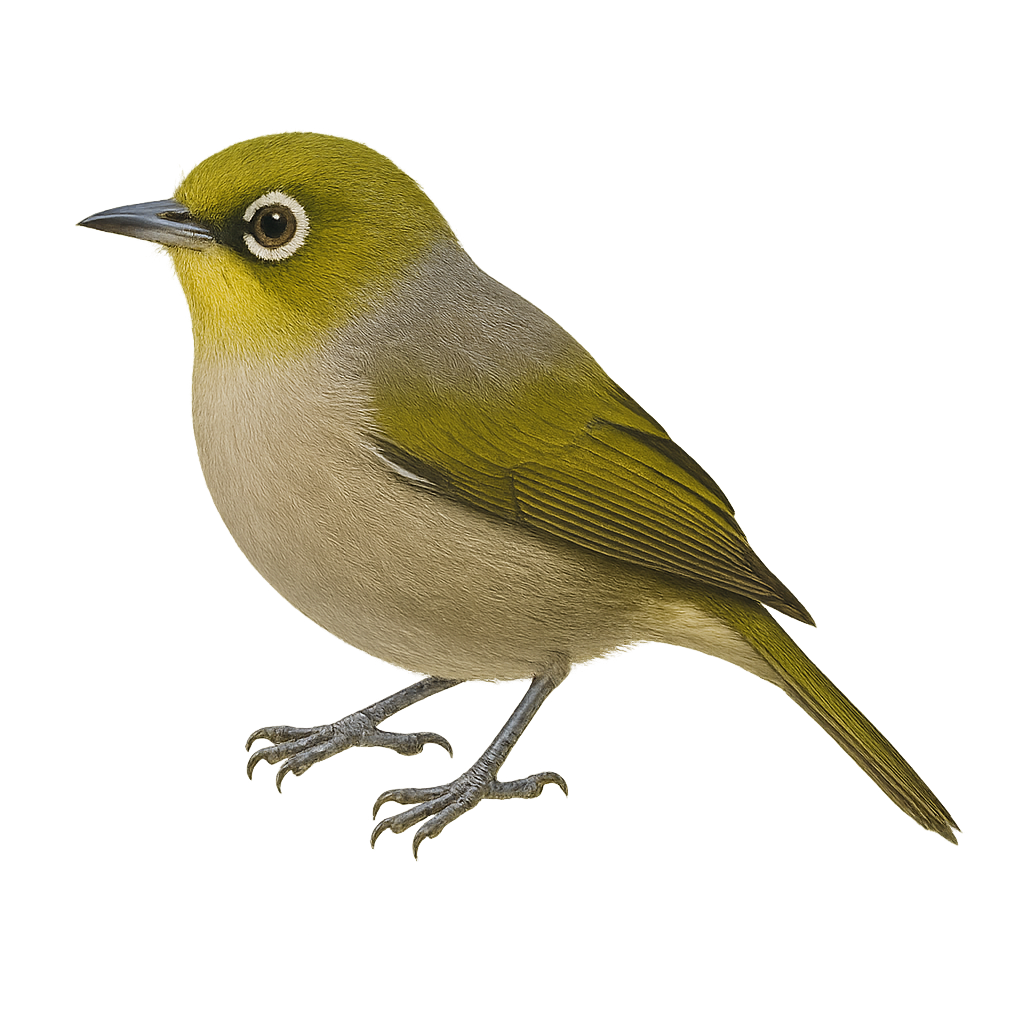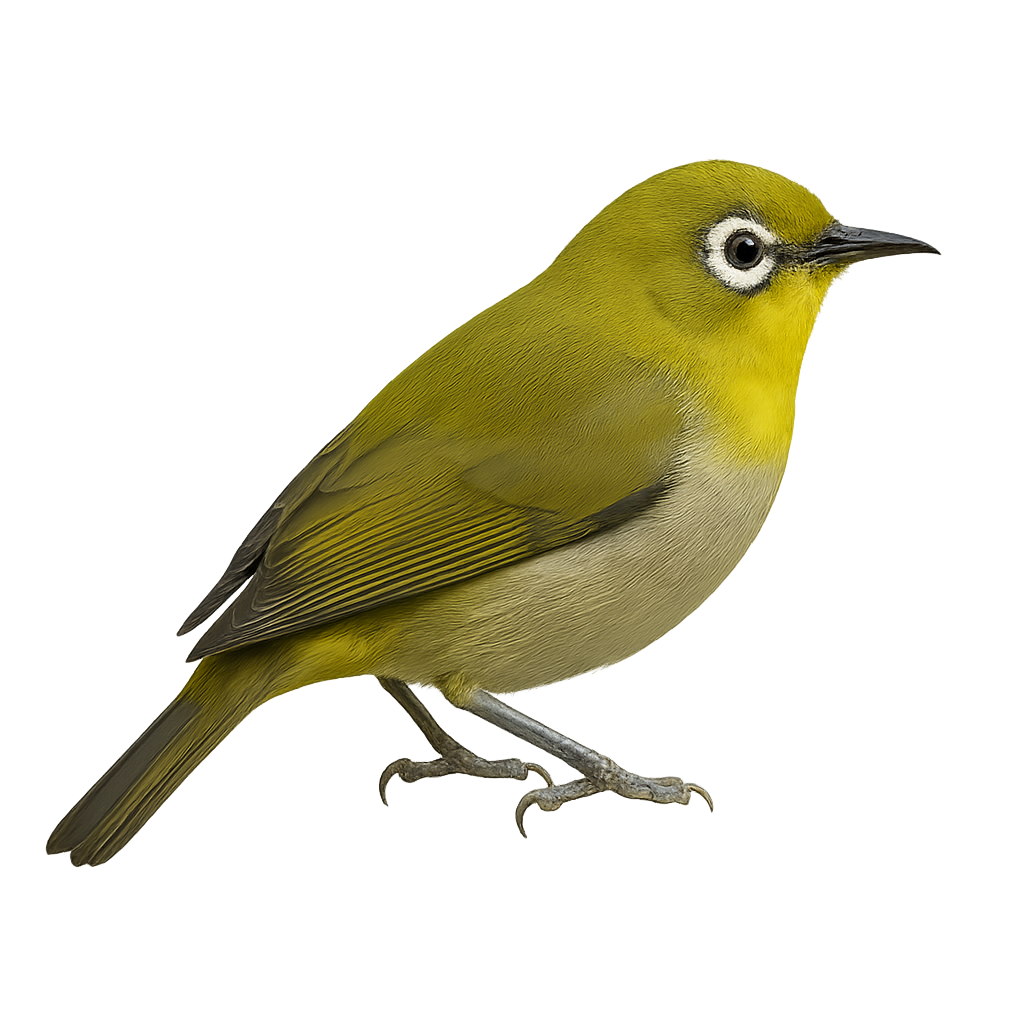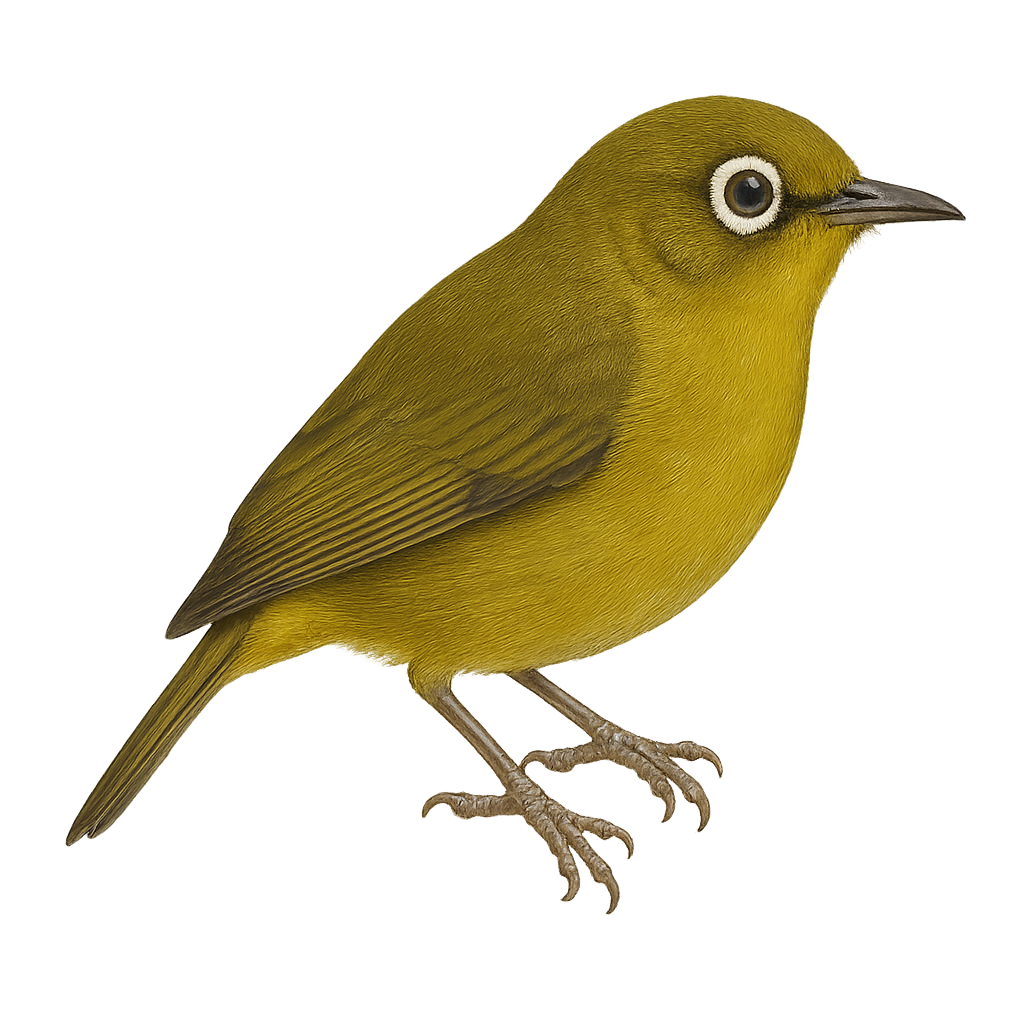The African white-backed vulture, or Gyps africanus, is a large scavenging bird found primarily in sub-Saharan Africa. It is identifiable by its light brown plumage and distinctive white back. This vulture plays a crucial role in the ecosystem by removing carcasses and preventing the spread of diseases. Unfortunately, it is threatened by habitat loss, poisoning, and poaching. African vultures live in colonies and are often seen circling in the sky in search of food. Their wingspan can reach up to 2.3 meters, allowing them to cover large distances in search of carcasses.
The Cape Vulture, or Gyps coprotheres, is a large scavenging bird native to southern Africa. It is characterized by its bald head and neck, which are well-suited to its carrion-based diet. Its plumage is mostly beige with darker tones on the wings. This vulture plays a vital role in the ecosystem by disposing of carcasses, thus helping to prevent the spread of diseases. It nests in colonies on cliffs, usually laying a single egg per year. Unfortunately, this species is threatened by habitat loss, poisoning, and collisions with human structures. Conservation efforts are underway to protect and restore its populations.
The Himalayan Vulture, Gyps himalayensis, is a magnificent scavenger bird found in the high altitudes of the Himalayas. With a wingspan reaching up to 3 meters, it is one of the largest vultures in the world. Its plumage is primarily light brown with darker shades on the wings and tail. The head and neck are covered with white down, giving it a majestic appearance. This vulture plays a crucial role in the ecosystem by cleaning up carcasses, helping to prevent the spread of diseases. It is often seen soaring in circles in the sky, using thermal currents to glide effortlessly over long distances.
The Rüppell's vulture is a large carrion-feeding raptor, 85–95 cm tall with a wingspan of 230–265 cm, featuring dark brown plumage and a pale bare head. It inhabits mountain cliffs and savannas of East and Central Africa, feeding mainly on large mammal carcasses. During breeding, it nests in dense colonies on cliff ledges, and pairs sometimes perform group display flights above their nests.
The Griffon Vulture is a large bird of prey found primarily in the mountains, hills, and rocky areas of Europe, Asia, and North Africa. It typically measures between 93 and 110 cm in length, with a wingspan of 2.5 to 2.8 meters, and weighs between 6 and 12 kg. Its plumage is mainly light brown, with white feathers around its neck and head, and a large area of bare skin on the neck. The Griffon Vulture is a scavenger, primarily feeding on animal carcasses. It plays a crucial role in the ecosystem by cleaning up carcasses and preventing the spread of diseases. While its population has declined in some regions, the Griffon Vulture benefits from conservation programs, but it remains threatened by habitat loss, illegal hunting, and poisoning.
The Monk Vulture is a large bird of prey found primarily in the mountains of Eastern Europe, Asia Minor, and Central Asia, with populations in Spain, Bulgaria, and Greece. It typically measures between 80 and 100 cm in length, with a wingspan of 2.3 to 2.8 meters, and weighs between 7 and 12 kg. Its plumage is mainly dark brown, with a bare head, distinguishing it from other vultures. The Monk Vulture is a scavenger, primarily feeding on animal carcasses, and plays a crucial ecological role in helping to remove carcasses and prevent the spread of diseases. While it is protected in many regions, it remains threatened by habitat loss, poaching, and poisoning.
The Lappet-faced Vulture, Torgos tracheliotos, is a large scavenging bird native to Africa, easily identifiable by its bare head and distinctive skin folds around the neck. With a wingspan reaching up to 2.9 meters, it is one of the largest African vultures. Its plumage is primarily dark brown, contrasting with its pale pink head. It plays a crucial role in the ecosystem by cleaning up carcasses, which helps prevent the spread of diseases. This vulture prefers open savannas, semi-deserts, and arid regions, where it can easily spot its prey. Unfortunately, it is threatened by habitat loss, poisoning, and illegal hunting.
The King vulture is a large raptor from the Cathartidae family, recognizable by its bare red head and dark plumage. This vulture, which inhabits mainly the forests and savannas of Central and South America, primarily feeds on carrion, which it finds thanks to its excellent sense of sight and smell. It plays an essential ecological role in cleaning ecosystems. Despite its imposing size, it is often seen flying alone or in small groups. While protected, it is threatened by habitat loss and poisons used in certain hunting practices.
The Egyptian Vulture, or Neophron percnopterus, is a small vulture from the Accipitridae family. It is easily recognizable by its white plumage contrasted with black flight feathers and its bare yellow face. This scavenging raptor is often seen soaring in search of carcasses. It sometimes uses tools, like stones, to break ostrich eggs, showcasing its intelligence. It frequents open habitats such as steppes, deserts, and mountains, often nesting on cliffs. Although it is a migratory bird, some populations are sedentary. Unfortunately, this vulture is threatened by habitat loss and accidental poisoning.
The Eurasian greenfinch is a small passerine bird found primarily in gardens, hedgerows, and open woodlands across Europe, Asia, and North Africa. It is distinguished by its bright green and yellow plumage, as well as its distinctive song. This small bird primarily feeds on seeds, which it finds in grasses, bushes, or on the ground. It is also known for its ability to emit powerful and clear sounds, often heard during its breeding season.
The Yellow-winged Leafbird, or Chloropsis flavipennis, is a medium-sized bird, primarily green with distinct yellow wings. It inhabits tropical and subtropical forests, preferring dense, humid areas. Its vibrant plumage makes it difficult to spot in the canopy, but its melodious song often reveals its presence. It primarily feeds on fruits, nectar, and insects, playing a crucial role in pollination and seed dispersal. Although generally solitary, it can sometimes be seen in small family groups. Its ability to adapt to various forest habitats makes it a resilient species, although deforestation poses an increasing threat to its survival.
The Golden-fronted Leafbird, Chloropsis aurifrons, is a vibrant and fascinating bird native to the tropical forests of Southeast Asia. It is distinguished by its bright green plumage, golden head, and black mask around the eyes. Measuring about 17 to 20 cm, this bird has a slender, slightly curved beak, perfect for feeding on nectar, fruits, and insects. Males and females have similar colors, although females are slightly duller. The Golden-fronted Leafbird is often seen in small groups, moving nimbly through dense foliage. It is known for its melodious and varied song, which resonates in the forests it inhabits.
The Paradise Whydah is a striking bird known for its long tail, which can be three times the length of its body, especially in males during the breeding season. This passerine, native to sub-Saharan Africa, is often seen in savannas and open woodlands. Its plumage is mainly black with metallic sheen, while the belly is pure white. Males display a spectacular tail during the mating season, which they lose afterward. Females are more discreet, with brown and streaked patterns. The Paradise Whydah is a brood parasite, laying its eggs in the nests of other birds, particularly waxbills.
The Pin-tailed Whydah, Vidua macroura, is a bird from the Viduidae family, recognizable by the male's long, slender tail. Native to sub-Saharan Africa, it is often found in savannas, grasslands, and agricultural areas. The male displays distinctive black and white plumage, while the female is more subdued with brownish tones. This bird is a brood parasite, laying its eggs in the nests of other species, primarily waxbills. The Pin-tailed Whydah is known for its spectacular courtship displays, where the male showcases his tail to attract females. Although not very shy, it remains cautious around humans.
The Yellow-throated Vireo, or Vireo flavifrons, is a small songbird native to North America, easily identified by its bright yellow throat and two white wing bars. Measuring about 13 cm in length, it has an olive-green back and white underparts. It primarily inhabits deciduous and mixed forests, feeding on insects and berries. Its melodious and repetitive song is often heard before the bird is seen. A migratory species, it winters in Central America and northern South America. Although its habitat is threatened by deforestation, it is currently listed as Least Concern by the IUCN.
The Blue-headed Vireo is a small songbird belonging to the Vireonidae family. It is easily recognizable by its bluish-gray head, white eye rings, and white belly contrasting with its olive-green back. This bird primarily inhabits coniferous and mixed forests in North America, where it feeds on insects and small fruits. A migratory species, it winters in the southern United States, Mexico, and Central America. The Blue-headed Vireo is territorial, especially during the breeding season, when the male sings to defend its territory and attract a mate. Although its habitat is threatened by deforestation, the species is currently considered of least concern by the IUCN.
The White-eyed Vireo, or Vireo griseus, is a small songbird belonging to the Vireonidae family. It is easily recognizable by its distinctive white eyes, surrounded by a bright yellow ring. Its size ranges from 12 to 15 cm, with primarily olive-green plumage on the back and white on the belly. It is mainly found in wooded areas and dense thickets of the eastern United States, although it migrates south for the winter. Its song is a complex mix of whistled notes and trills, often repeated throughout the day. The White-eyed Vireo is an active and curious bird, often seen foraging for insects among the leaves.
The Hutton's Vireo is a small songbird that primarily inhabits oak and coniferous forests in North America, particularly in the western United States and Mexico. It measures about 12 cm in length and weighs between 10 and 14 grams. Its plumage is mainly olive green on the upper parts and paler underneath, with distinctive white wing bars. This vireo is often mistaken for the Golden-crowned Kinglet due to their similar appearance. It feeds mainly on insects and small invertebrates but can also consume berries. The song of the Hutton's Vireo is a key element of its territorial behavior and communication.
The Phylloscartes flavovirens, or yellow-bellied tyrannulet, is a small bird from the Tyrannidae family. It is distinguished by its olive-green plumage on the back and bright yellow on the belly, making it easily recognizable. Its modest size and slender beak are adapted to its insectivorous diet. It is mainly found in the humid forests and wooded areas of South America, often seen foraging for insects among the foliage. Although discreet, its melodious song is an indicator of its presence. This tyrannulet is an active bird, often on the move, known for its quick and agile flights.
The Whiskered Yuhina is a small bird primarily found in the mountainous forests of Southeast Asia. It is easily identifiable by its olive-brown plumage and distinctive yellow collar around its neck. Measuring about 12 to 14 cm in length, this bird is often seen in active flocks, feeding on insects and small fruits. Its song is melodious and complex, making it a delight for birdwatchers. The Whiskered Yuhina is a sociable bird, often seen in the company of other bird species. It plays an important role in the ecosystem by aiding in seed dispersal.
The Zosterops lateralis, commonly known as the Grey White-eye, is a small passerine bird with predominantly olive-green plumage and greyish underparts. It is easily identifiable by its distinctive white eye-ring. Native to Pacific islands, particularly New Caledonia, this bird is often seen in active flocks, feeding mainly on insects and nectar. It plays a crucial role in pollinating local plants. Although generally discreet, its melodious and repetitive song can be heard in forests and gardens. Its ability to adapt to various habitats, including urban areas, makes it resilient to environmental changes.
The Montane White-eye, or Zosterops poliogastrus, is a small bird with predominantly olive-green plumage and a distinctive grey belly. It is characterized by a white eye-ring, giving it a lively and curious look. This bird is often seen in active flocks, moving swiftly through foliage in search of fruits, nectar, and insects. It is mainly found in the mountainous regions of East Africa, inhabiting humid forests and wooded areas. Although it is a sociable bird, it can be wary of intruders. Its ability to adapt to different habitats and its gregarious behavior make it an interesting subject for ornithologists.
The Abyssinian White-eye is a small bird with olive-green plumage, distinguished by a distinctive white eye-ring. It measures about 10 to 12 cm in length and weighs between 6 and 10 grams. This bird is primarily insectivorous but also feeds on nectar and fruits. It inhabits various environments, including forests, savannas, and shrublands, often at altitudes between 600 and 3000 meters. The Abyssinian White-eye is a social bird, living in groups and communicating through melodious songs. It is widespread in East Africa, particularly in Ethiopia, Somalia, and Kenya. Although not threatened, it is sensitive to deforestation and habitat loss.
The Buru White-eye is a small bird endemic to the island of Buru in Indonesia. It belongs to the Zosteropidae family and is recognizable by its olive-green plumage, white eye-ring, and slender beak. This bird measures about 11 cm in length and weighs between 8 and 12 grams. It primarily inhabits tropical moist forests and wooded lowland areas. The Buru White-eye feeds mainly on insects, fruits, and nectar. It is often observed in small groups, actively moving in search of food. Although its habitat is limited, it is not currently considered threatened.



